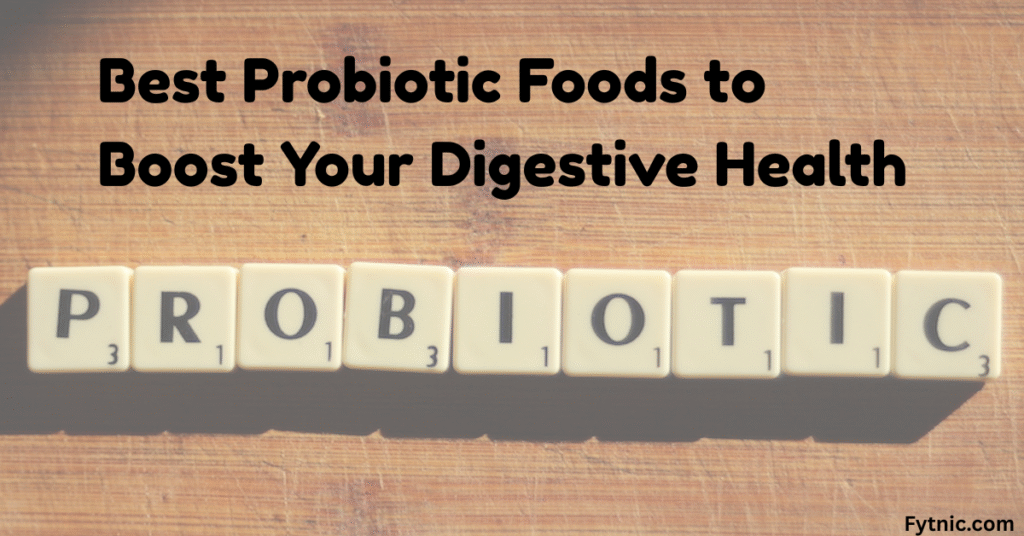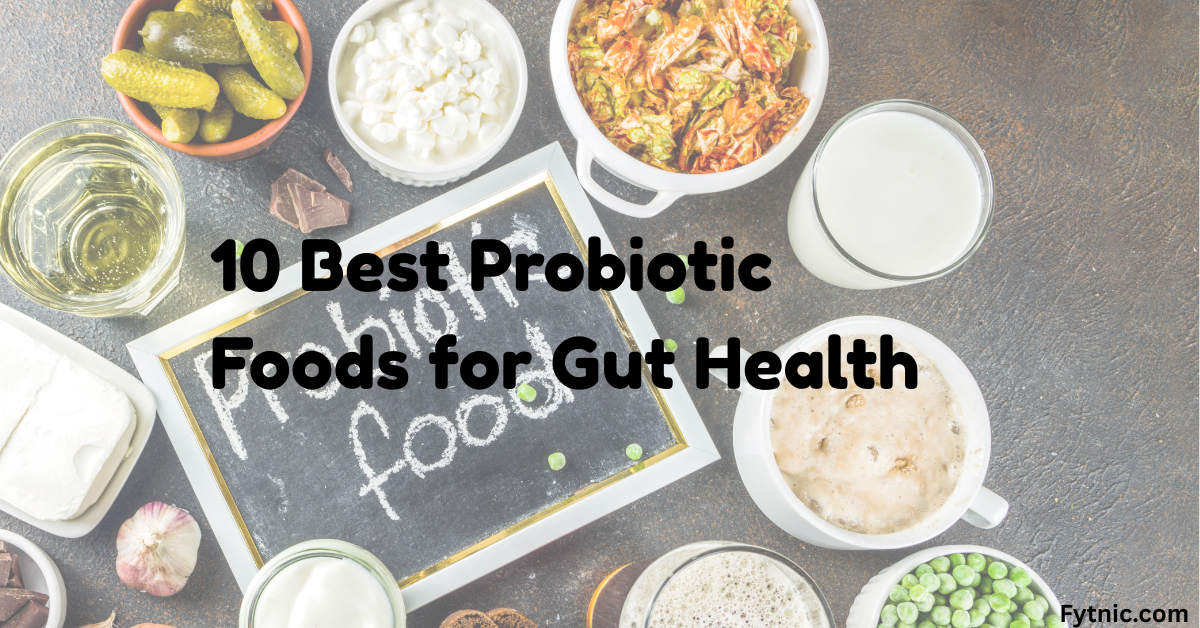Ever been stuck in that afternoon slump where your stomach feels like a balloon and your brain feels like mush? Yeah, me too. For the longest time, I thought that was just part of being a grown-up with a desk job.
Turns out, my gut was trying to tell me something.
After dealing with bloating, weird energy crashes, and skin breakouts that no fancy cream could fix, I finally started learning about gut health. The game-changer? Adding probiotic foods to my everyday meals.
I’m not going to bore you with complicated science or try to sell you expensive supplements. Just real food that helped me (and can help you too).
What Are Probiotics and Why Your Gut Needs Them
Take probiotics to be the “good guys”—beneficial bacteria that maintain the health of your digestive tract. Similar to a garden, your stomach requires the proper ratio of plants to flourish. The problems begin when harmful germs take over (due to stress, antibiotics, junk food, or sleep deprivation).
Many people think they need fancy probiotic pills, but honestly? Probiotic food works better because:
- It’s cheaper
- The good bacteria survive better
- You get other nutrients too
- There are different types of good bacteria in different foods
Your gut affects almost everything – how strong your immune system is, your mood, your energy, and even how clear your skin looks. Pretty crazy, right?
10 Best Probiotic Foods to Boost Your Digestive Health

1. Yogurt: The Easiest Place to Start
Not all yogurts help your gut. Look for words like “live and active cultures” on the label. Skip the ones with tons of sugar – they feed the bad bacteria. Plain yogurt with some fresh fruit is your best bet.
Quick tip: Greek yogurt has more protein but sometimes fewer probiotics food than regular yogurt. Both are good choices!
2. Kefir: Like Yogurt But Even Better
Kefir is basically drinkable yogurt on steroids. It has up to three times more good bacteria than yogurt and comes in different flavors. The cool thing is that many people who can’t handle milk can often drink kefir because the good bacteria break down the lactose.
I like to use it in smoothies or pour it over cereal. It’s a bit tangy but you’ll get used to it!
3. Sauerkraut: Not Just for Hot Dogs
This is just fermented cabbage, but it’s full of gut-friendly bacteria. The trick is buying the kind in the refrigerated section, not the shelf-stable stuff (which has been heated and lost all the good bacteria).
Just one fork scoop with your meal helps your gut. I add it to sandwiches, eggs, or just eat it on the side with dinner, full of probiotic food.
4. Kimchi: Spicy Cabbage That Loves Your Gut
This Korean kimchi fermented veggie mix has a kick to it! Besides being delicious, it’s packed with good bacteria that help your digestion. Some research shows it might also help with inflammation and cholesterol.
Start with a little bit if you’re not used to spicy food. It’s amazing with eggs, rice bowls, or alongside any protein and probiotic foods.
5. Kombucha: The Fizzy Drink That Actually Helps You
This is fermented tea that tastes fizzy and slightly sweet. It contains healthy acids and lots of good bacteria. Just watch out for brands with tons of added sugar – that defeats the purpose.
I switched my afternoon soda habit to kombucha and noticed better energy levels within a couple weeks.
6. Tempeh: Protein-Packed Powerhouse
Tempeh is made from fermented soybeans and has a solid texture and nutty flavor. Instead of fermenting like tofu does, it produces healthy bacteria and provides 19g of protein per 100g portion. Thinly slice it, marinade it for a short time, and then pan-fry it to provide a tasty protein boost to any meal.
7. Miso: Beyond Just Soup
This fermented paste from Japan gives an umami taste to a variety of foods and contains millions of good bacteria. Add it to marinades, sauces, and vegetable recipes. To maintain those live probiotics, keep in mind to add miso to foods that are slightly chilled (below 115°F).
8. Traditional Pickles: Choose Wisely
Probiotic benefits can only be obtained from organically fermented pickles. Choose refrigerator choices that have simple components (cucumbers, water, salt, and spices) and a hazy brine. If vinegar is included on the label, it isn’t fermented traditionally and doesn’t have any probiotic foods benefits. These tart sweets improve digestion and give food taste.
9. Cottage Cheese with Live Cultures
Not all cottage cheese has probiotics, so check the label for “live cultures.” This protein-packed option is great for your muscles and your gut.
I like mine with fruit for breakfast or as a quick protein snack when I’m hungry between meals.
10. Natto: The Stinky One With Amazing Benefits
I’m gonna be honest – this Japanese fermented soybean Probiotic foods is an acquired taste. It smells strong and has a sticky, stringy texture that takes getting used to. But it contains a special type of good bacteria that makes vitamin K2 and enzymes that really help digestion.
Try a tiny bit mixed into strong-flavored dishes until you get used to it. Or maybe save this one for when you’re more adventurous!
How to Add These Probiotic Foods to Your Day Without Trying Too Hard
You don’t need to completely change how you eat. Just try these simple swaps:
- Use kefir instead of milk in your morning smoothie
- Add a spoonful of sauerkraut or kimchi to your lunch
- Grab kombucha instead of soda when you need an afternoon pick-me-up
- Make a salad dressing with miso paste instead of store-bought dressing
- Try tempeh in your stir-fry instead of meat once a week
Remember: A little bit every day works better than a ton once a week. Your gut likes consistency.
Mistakes People Make With Probiotic Foods
- Cooking them at high heat (kills the good bacteria)
- Starting with too much too fast (hello, gas and bloating!)
- Not checking labels for “live cultures”
- Forgetting to eat prebiotic foods too (the fiber that feeds good bacteria – found in garlic, onions, bananas, and apples)
- Giving up too soon (it usually takes 2-4 weeks to notice changes)
When You Might Need More Probiotic Foods
While probiotic foods should be your first go-to, sometimes you might need extra help:
- After taking antibiotics
- During super stressful times
- If you have specific digestive issues
- When you’re traveling and can’t get your usual foods
Always check with your doctor before taking supplements. Everyone’s gut is different!
Want to Really Fix Your Gut Heal?
Adding these foods is an awesome first step to feeling better. But if you’re dealing with serious gut issues or want more personalized help, you might need some guidance and more probiotic foods.
That’s why I created the Complete Gut Restoration Program – to help people who are tired of just dealing with their symptoms and want real solutions.
In this 6-week online course, you’ll get:
- Simple meal plans that make gut health easy
- Weekly Q&A sessions where you can ask me anything
- A community of people on the same journey
- Easy-to-follow steps for fixing common digestive problems
- More Probiotic Foods for Fixing Your Gut Health
Your path to better digestion, clearer skin, more energy, and feeling amazing starts with what you eat. Which probiotic foods from this list will you try first?
Fytnic : “Small Changes. Real Results. Your Health, Your Way.”
When your gut feels good, everything feels good. Trust me on this one!
